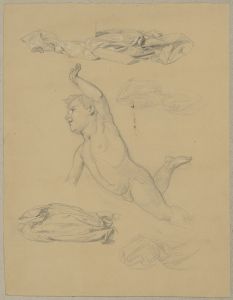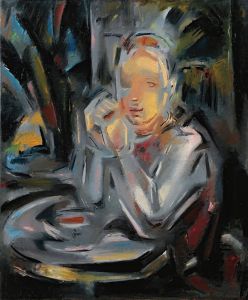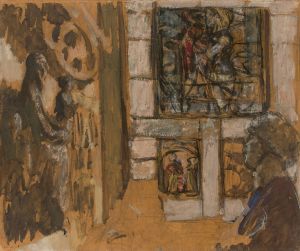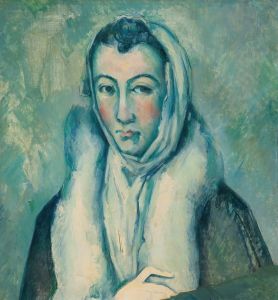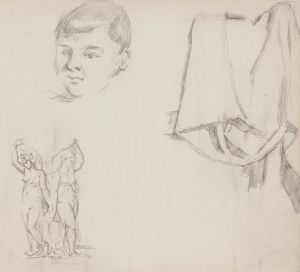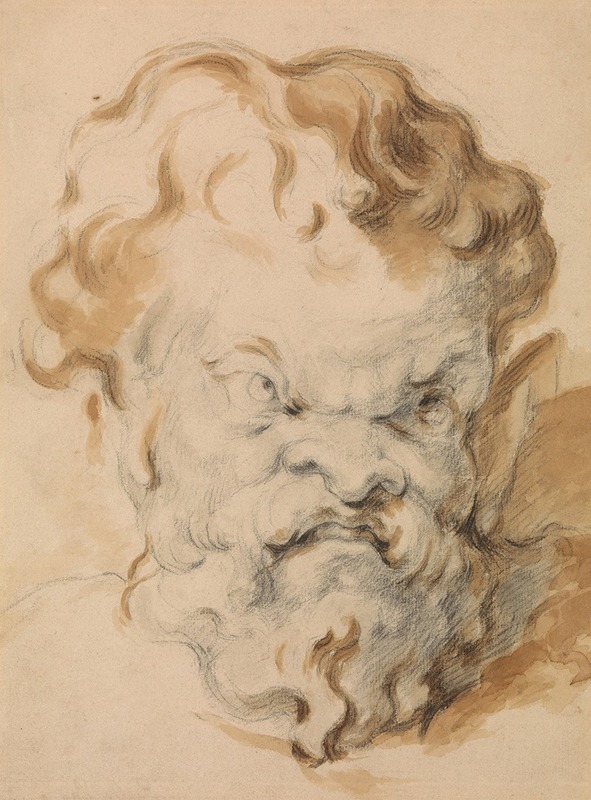
Head of Silenus
A hand-painted replica of Paul Cézanne’s masterpiece Head of Silenus, meticulously crafted by professional artists to capture the true essence of the original. Each piece is created with museum-quality canvas and rare mineral pigments, carefully painted by experienced artists with delicate brushstrokes and rich, layered colors to perfectly recreate the texture of the original artwork. Unlike machine-printed reproductions, this hand-painted version brings the painting to life, infused with the artist’s emotions and skill in every stroke. Whether for personal collection or home decoration, it instantly elevates the artistic atmosphere of any space.
Paul Cézanne's Head of Silenus is a painting created by the French Post-Impressionist artist, who is widely regarded as a pivotal figure in the transition from 19th-century Impressionism to 20th-century modernism. This work is believed to have been completed in the late 19th century, during a period when Cézanne was deeply engaged in exploring classical themes and motifs, often drawing inspiration from mythology and ancient art.
The painting depicts Silenus, a figure from Greek mythology who is often associated with Dionysus, the god of wine, revelry, and fertility. Silenus is traditionally portrayed as a companion and tutor to Dionysus, frequently depicted as an older, rotund man with a jovial or inebriated demeanor. In Cézanne's interpretation, the focus is on the head of Silenus, rendered with expressive brushstrokes and a distinctive use of color that characterizes much of the artist's work. The painting reflects Cézanne's interest in capturing the essence of his subjects through form and color rather than adhering strictly to realistic detail.
Head of Silenus demonstrates Cézanne's mastery of composition and his ability to imbue his subjects with a sense of weight and presence. The work is notable for its textured surface and the interplay of light and shadow, which contribute to the overall dynamism of the piece. Cézanne's approach to this mythological subject aligns with his broader artistic goals of reinterpreting traditional themes through a modern lens.
The exact circumstances surrounding the creation of Head of Silenus are not well-documented, and the painting is not as widely studied or discussed as some of Cézanne's other works, such as his still lifes or landscapes. However, it remains an example of his engagement with classical themes and his innovative approach to painting. The work is housed in a private collection or museum, though specific details about its current location or provenance may not be readily available.
As with many of Cézanne's works, Head of Silenus reflects the artist's dedication to pushing the boundaries of artistic convention, paving the way for future movements such as Cubism and Fauvism. While it may not be as iconic as some of his other paintings, it contributes to the broader understanding of his oeuvre and his influence on the development of modern art.





